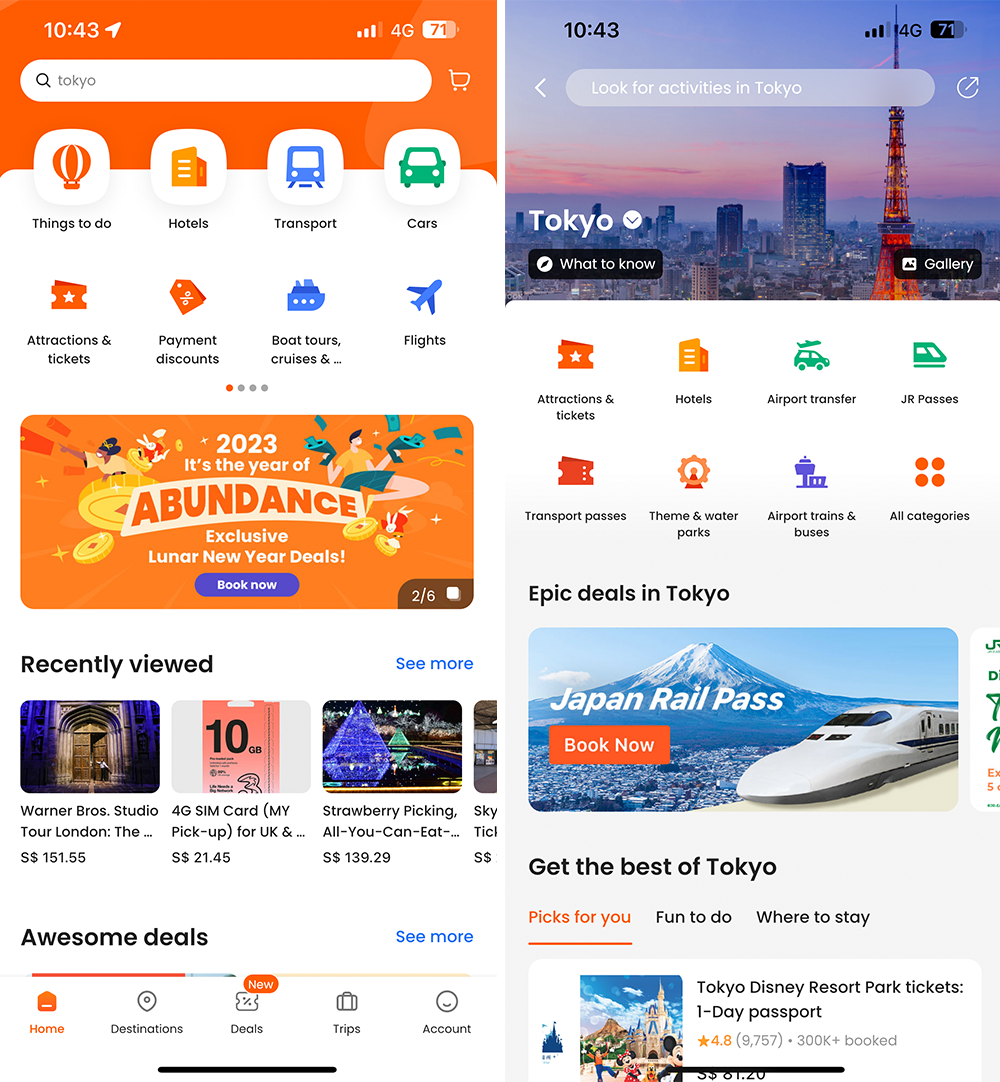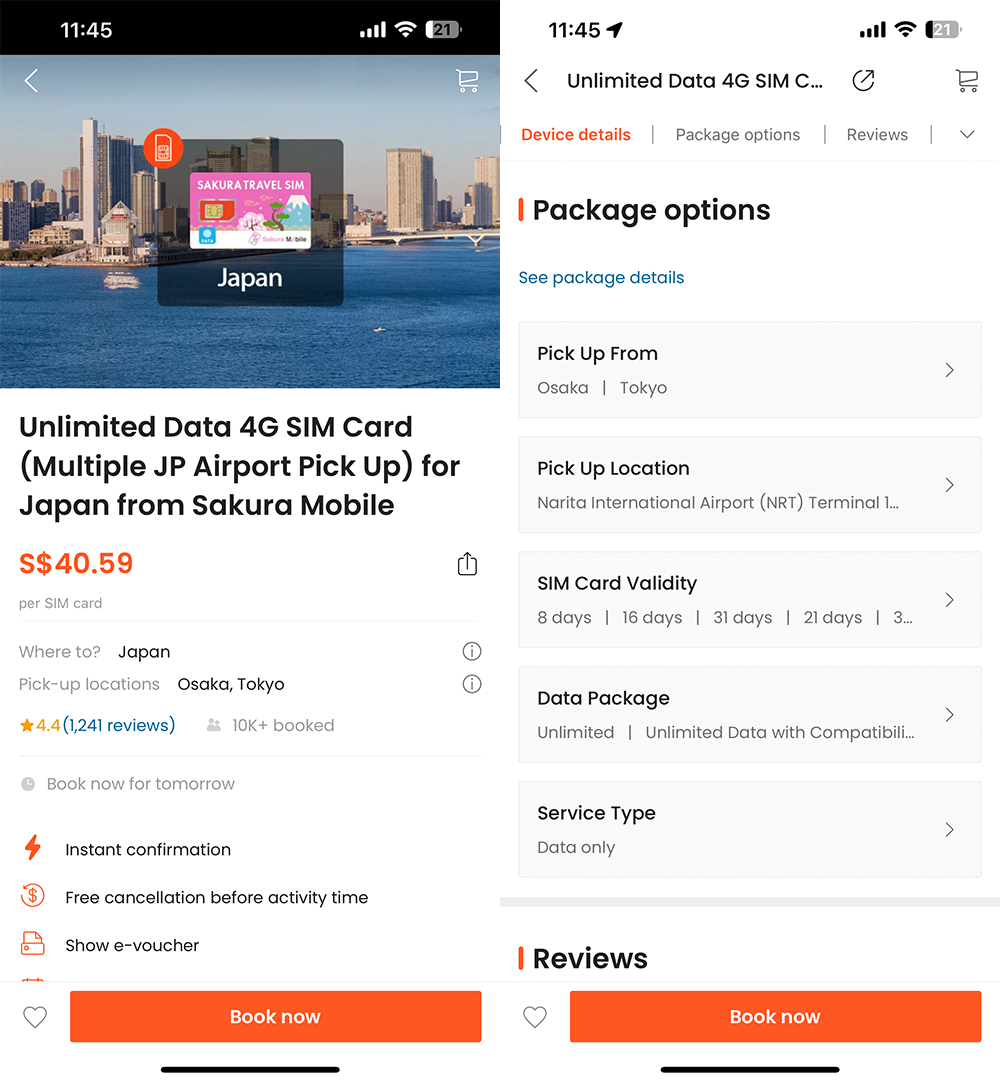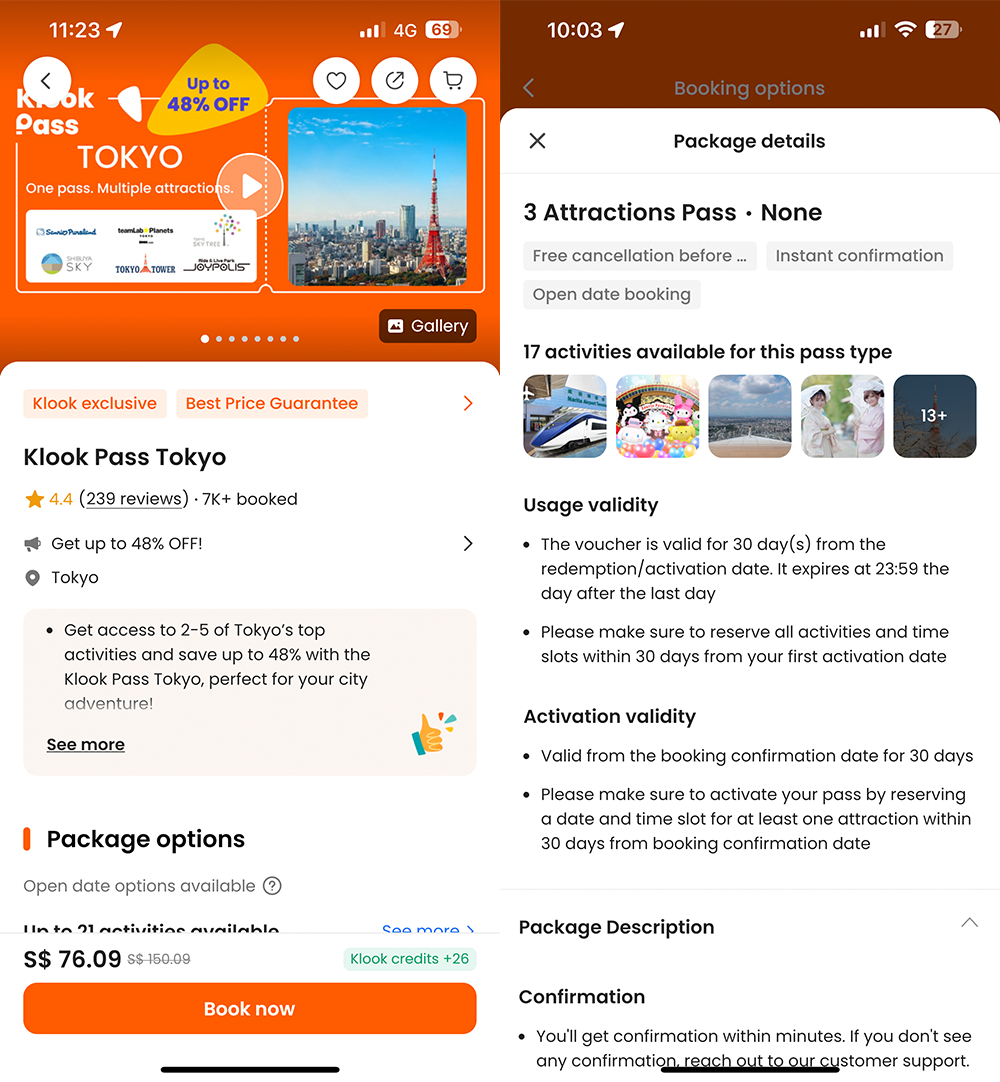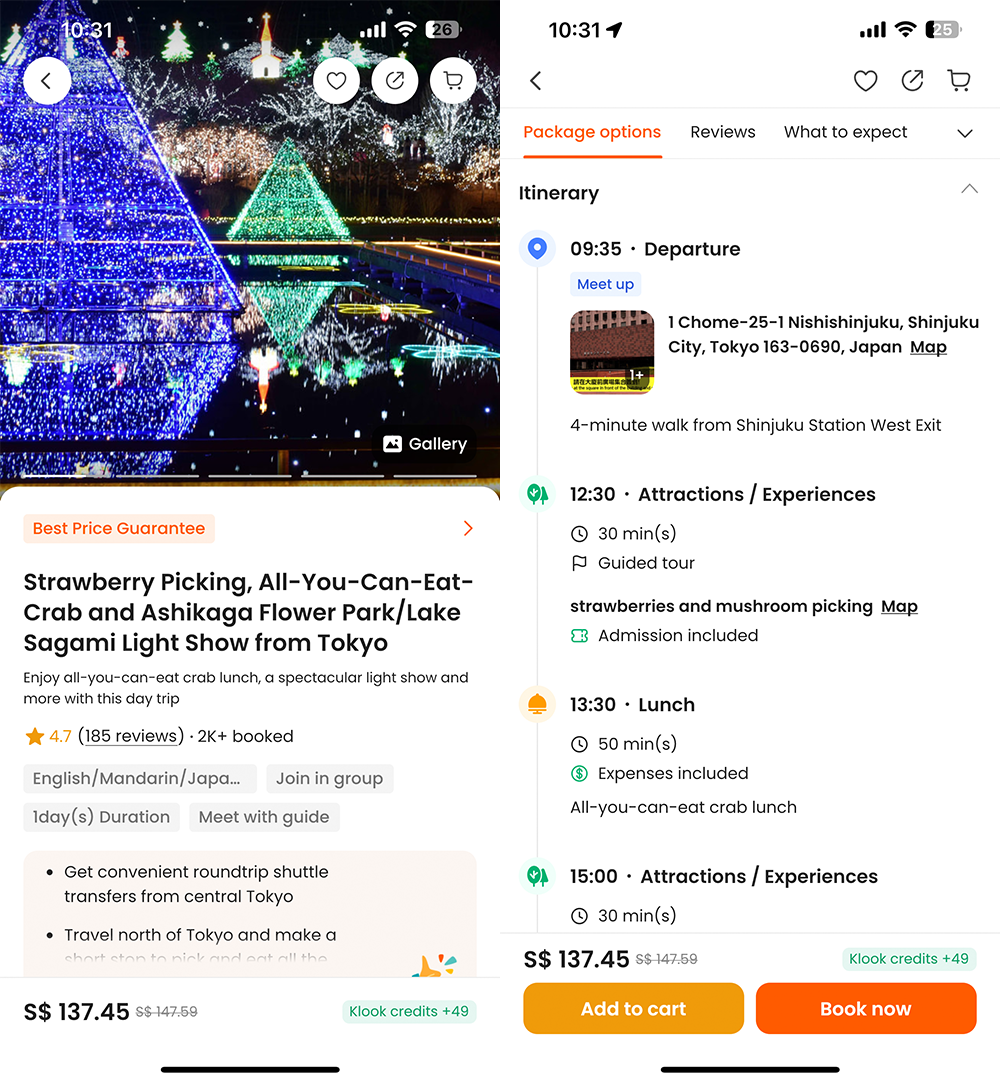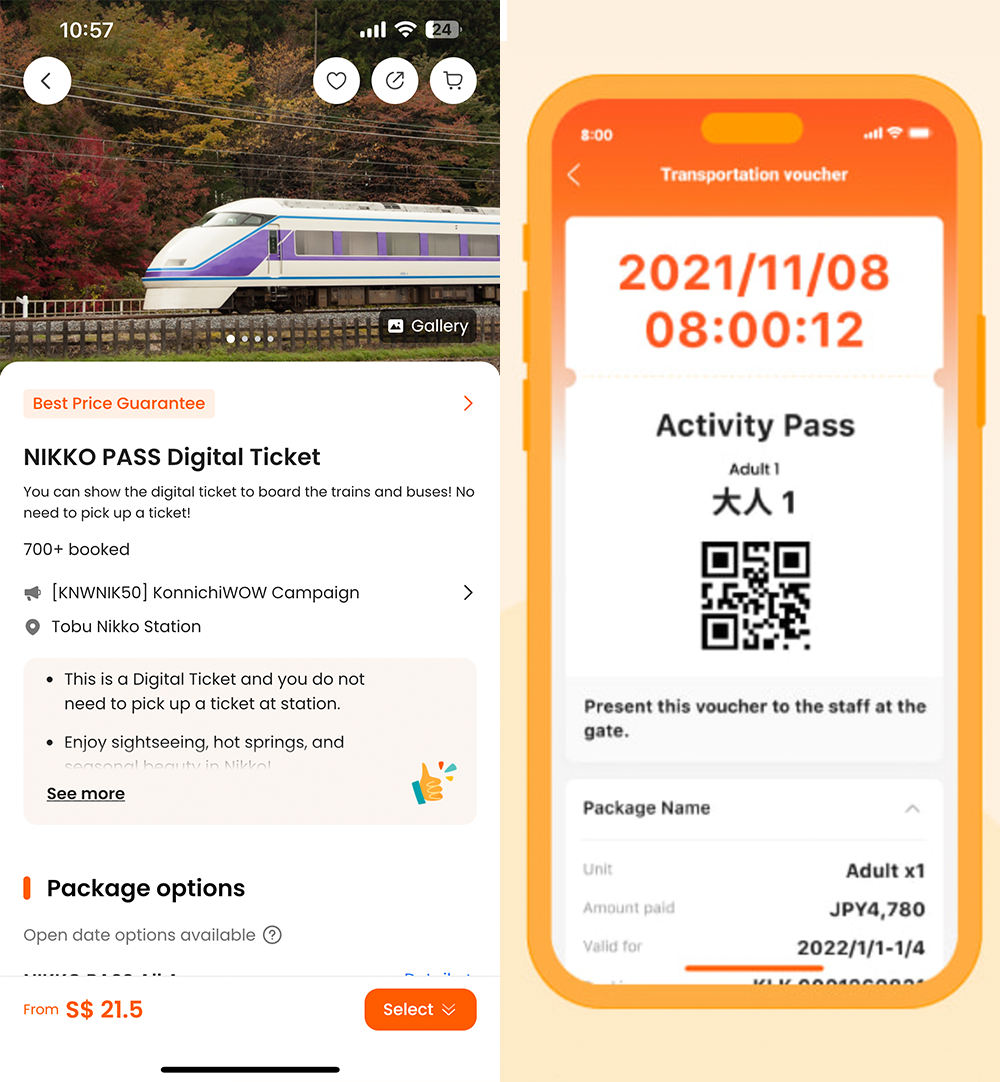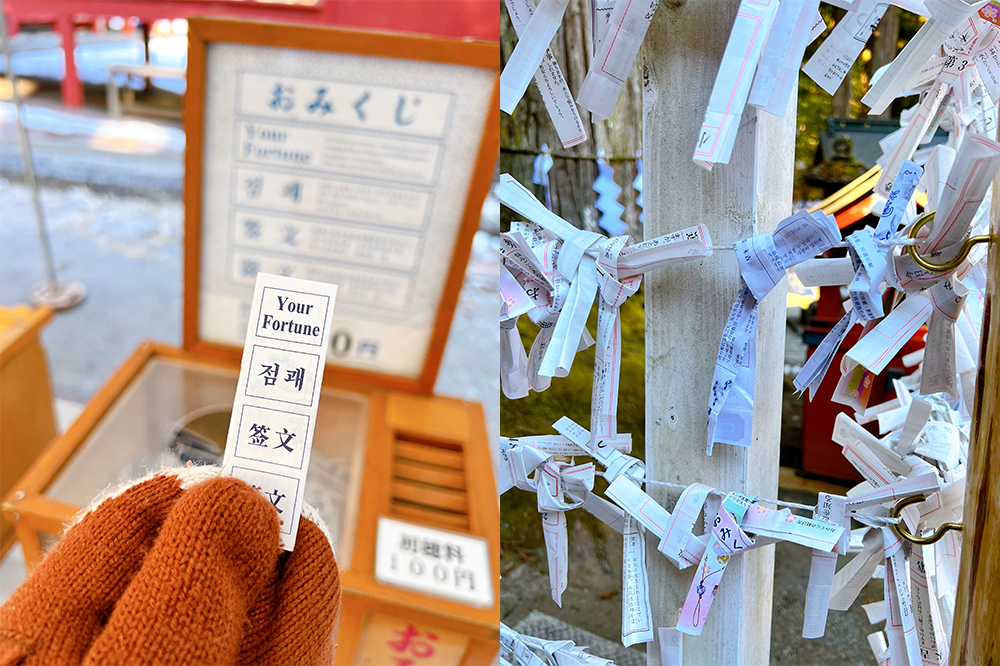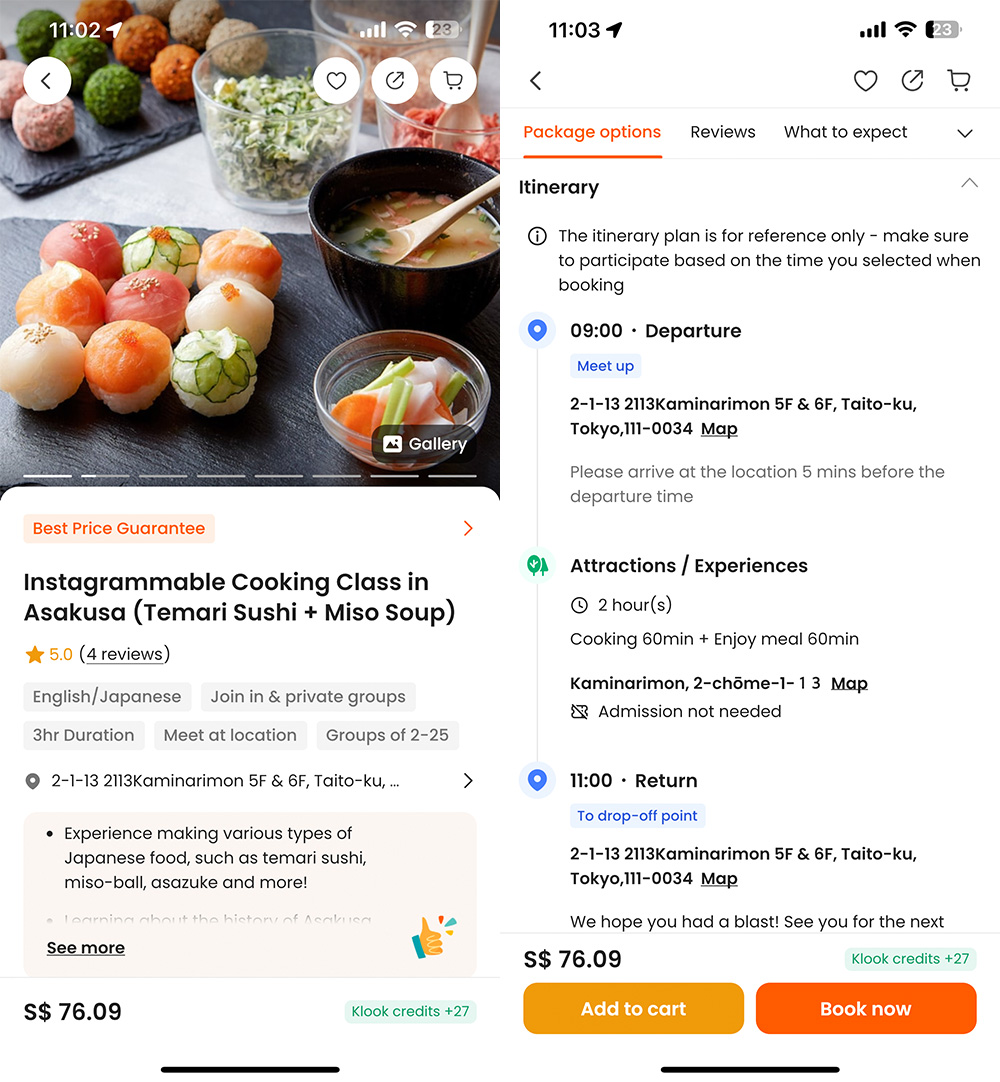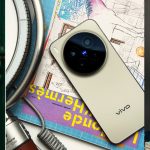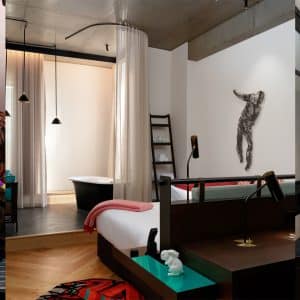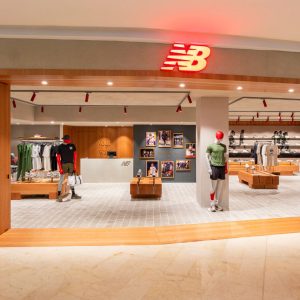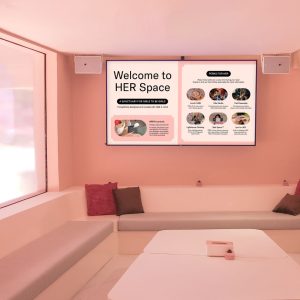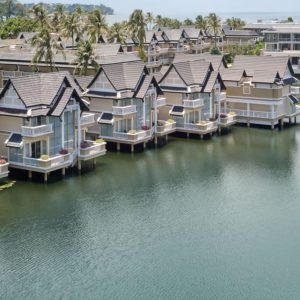Whenever someone asks me if I’ve been to Japan, I would always tell them it’s complicated because while I acknowledge having been in the country once, I never actually stepped foot beyond the confines of Tokyo Disneyland. Yes, you read that right — I spent 6 days and 5 nights in Japan holed up at Tokyo Disneyland and DisneySea without EVER stepping out of the resort’s vicinity. So, when I was presented with an opportunity to visit Tokyo with Klook, I knew I had to give myself a do-over.
For those unfamiliar with the platform, Klook gives you the ability to search for experiences and travel deals based on the country you are visiting. Its user-friendly features let you find activities easily at a more cost-saving price than those from the actual site. This also applies to things such as mobile wi-fi, transportation, and local SIM cards.
Before every trip, seasoned travellers would be familiar with getting a local SIM card, which embarrassingly, was something I tried out for the first time since I’m one of those who cluelessly sign up for costly data roaming plans. So, it was a no-brainer for me to use Klook to purchase a local SIM card with unlimited data for my trip, which cost a third of my auto-roaming plan, and all I had to do was simply collect it upon arrival at the airport.
I also had my tickets for the Kiseki Skyliner settled before my trip to avoid the hassle of purchasing in person. For most travellers arriving through Narita, the Skyliner offers a quick and direct way out from the airport to Tokyo’s city centre. With my Klook booking, I was able to promptly redeem the Skyliner tickets with allocated seats using the QR code provided.
[CLICK ON THE IMAGES TO ENLARGE.]
.
If you’re new to Tokyo (just like me), it would be good for you to purchase a Suica card before you leave the airport. This card is similar to our local Ez-Link card and makes it easier to travel the subway without having to purchase single tickets at every station. I was in Tokyo for a total of 6 days and 5 nights of which my itinerary was filled with experiences and activities that can be found through Klook. Read on for a closer look at what you can expect to experience on your next trip to Japan!
KLOOK PASS TOKYO
Like most occasional travellers, I often book my activities individually which typically end up being expensive and hard to keep track of. With Klook Pass Tokyo, I not only get entry to the selected attractions with an all-in-one pass, but I also save on the individual admission fees. The pass allows you to select up to 7 attractions which include Tokyo Sanrio Puroland and teamlab PLANETS Tokyo. For this trip, I had a 3 Attractions Pass for Tokyo Skytree, Art Aquarium Museum Ginza, and Yomiuri Land.
TOKYO SKYTREE
Since its completion in 2012, Tokyo Skytree has become the tallest structure in Japan (and third in the world) standing at about 634 meters high. Aside from being the primary television and radio broadcast site for the Kanto region, it has also become one of the must-see locations for tourists, complete with an accompanying mall, Tokyo Solamachi, that houses an aquarium and seven floors for shopping and dining.
[CLICK ON THE IMAGES TO ENLARGE.]
.
As someone who has a fear of heights, I stepped into Tokyo Skytree with slight hesitation when I was told that I would visit not only the 350th floor but also the 450th floor. Anxiety aside, Tokyo Skytree proved to be a picturesque destination with a circular viewing deck that offered a panoramic and breathtaking view of Tokyo no matter where you stand, and you might even be able to spot Mount Fuji in the distance if the weather is particularly good!
ART AQUARIUM MUSEUM GINZA
Located in the department store Ginza Mitsukoshi in Ginza, the Art Aquarium Museum Ginza offers you a unique way to appreciate Japanese culture and art with (living and swimming) goldfish. Home to approximately 70 species of goldfish, the museum combines light, sound, and fragrance to not only showcase the aquatic creatures in their specially built fish tanks but also in various (non-living) Japanese art forms with 13 themed exhibits ranging from a Goldfish Corridor to a Goldfish Waterfall, and an Origami-rium.
[CLICK ON THE IMAGES TO ENLARGE.]
.
Though I can’t say that I appreciate goldfish all that much, I did like the unique interpretation of art that the museum conveyed. Unlike my usual behaviour when it comes to anything associated with art, I found myself less inclined to breeze through the space which probably allowed me to fully appreciate the exhibits and in a cliche sense, find my inner peace.
YOMIURI LAND
Nestled in what looks to be a residential neighbourhood that is just 35 minutes away from Shinjuku, this is Tokyo’s largest domestic theme park which is open all year round with about 44 rides and attractions that include viewing cherry blossoms in the spring, a water park for the summer, and spectacular light illuminations in the winter.
[CLICK ON THE IMAGES TO ENLARGE.]
.
I’m a theme park enthusiast who favours the big-name parks and while I was not expecting much of Yomiuri Land, I am always happy to be proven wrong. From the surprising entry into the park that came in the form of a suspended gondola ride to the sheer size of the land, the park was more than I imagined. Even though I did not have enough time to explore the entire park, I was able to enjoy Jewellumination, their main attraction for winter, which reflects vibrant jewel-like colours around the park using LED lights. I highly recommend taking in the view from the Ferris Wheel as it offers an exceptionally gorgeous bird’s eye view of the whole park.
GUNMA PREFECTURE
The day trip to Gunma typically takes two hours onboard a roundtrip shuttle which acts as your mode of transportation to and from the prefecture. The all-inclusive tour (available through Klook), also comes with a native Japanese tour guide who will not only brief you on the activities but also share tidbits about the customaries and life in Japan.
[CLICK ON THE IMAGES TO ENLARGE.]
.
As with most day trips, road conditions can be unpredictable so don’t be alarmed if the duration of your trip gets extended by an hour or two. Our tour group had a bit of a scare when we were told to expect a major jam on the expressway which added 90 minutes to the schedule but thankfully the traffic cleared up in time and we encountered no further delays!
STRAWBERRY PICKING
Before we disembarked to flex our strawberry picking skills, a farm attendant came on board to give us a bit of a brief on what to expect inside the greenhouse including the type of strawberries we’d be tasting, which turned out to be Princess Yayoihime — a rare type of strawberry only available in Gunma.
[CLICK ON THE IMAGES TO ENLARGE.]
.
Heading into the greenhouse, we were each given a small plastic tray with condensed milk on the side dipping. Gleefully holding my tray, I set out to find as many strawberries as I could eat as they had to be consumed within the confines of the greenhouse (meaning that we can’t ‘ta pao’ even if we wanted to).
Despite doing research on strawberry picking, it turns out that there is no real trick to picking them. All you actually need to do is just hold the fruit with one hand and hold the vine it is attached to with your other hand, turn the strawberry three times, and pull. With that technique in mind, I soon had a full tray of strawberries which I needed to make quick work of. It was an all-around fun experience that I would try again though I would have to overcome my fear of the working bees buzzing around.
TOFU SKIN SCOOPING
I’m a huge fan of anything tofu-related and going into this activity, my excitement had cranked up to a hundred percent, especially at the prospect of possibly consuming a few bowls of my beloved Yuba — the Japanese counterpart of our Chinese Tau Kee. Unlike the ones I’ve tasted at Japanese restaurants in Singapore, the Yuba in Japan had a smoother texture with a slightly milky aftertaste.
[CLICK ON THE IMAGES TO ENLARGE.]
.
Armed with a bowl and scooper, we made our way inside and gathered around a huge hot stove of sorts, where we were taught how to scoop the tofu skin up. Though it had looked fairly easy, I think I made it challenging for myself as I became slightly competitive and wanted to be one of those who could scoop up the yuba in one piece. It was, of course, a tall order, and after accepting self-defeat, I tucked into my bowl of yuba with some of the available condiments which included fried tofu skin, ramen soup, and other types of tofu.
Needless to say, my hunger for Yuba did get out of hand and I had shamelessly consumed three full bowls by the time we left the tofu factory.
ASHIKAGA FLOWER PARK
Best known for its Japanese Wisteria, the Ashikaga Flower Park is home to several hundred flowering plants and trees that are displayed in eight thematic chapters based on the seasons. As we were visiting during Winter, we were treated to the Bejeweled Flower Garden which uses over five million LED lights to take the place of flowers.
[CLICK ON THE IMAGES TO ENLARGE.]
.
I’m not a flower person so I had expected to take less than an hour before heading to the gift shop to hide from the cold, but I ended up walking the park for the full duration we were given to explore. To be honest, I had expected the park to be like our Flower Dome at Gardens by the Bay yet it only managed to surprise me with its size and the sheer amount of dedication put into sculpting each light exhibit. A must-see that I particularly enjoyed was the LED wisterias which had been replicated using LED lights that hung overhead, giving you an idea of what you could expect to see when the real wisterias are in bloom.
NIKKO PASS (DIGITAL TICKET)
With the Nikko Pass Digital Ticket, which I had booked prior to my trip, round trips between Tokyo and Nikko are covered in addition to an all-you-can-ride pass which allows for easy travel around the area by train or bus as you explore the World Heritage Sites of Nikko.
[CLICK ON THE IMAGES TO ENLARGE.]
.
It’s a fairly handy pass to have and all you need to do is just flash the QR code when you board and alight. This also applies to your trips to and from Tokyo where you will just need to show your QR code to the station masters for entry into the station. The Nikko Pass does not cover admission fees for the heritage sites but you can still easily purchase them when you’re there. Here’s a closer look at what you can expect to find in Nikko.
NIKKO TOSHOGU SHRINE
Up till then, my only knowledge of Japanese shrines came from what I watched in travel documentaries, and seeing it in real life is very different. Despite the buzz of tourists at the shrine, there was still an air of tranquility and mystery when you look at the structure.
[CLICK ON THE IMAGES TO ENLARGE.]
.
The shrine itself was pretty extensive and there was always something to see at every turn. I recommend taking the time to see the shrine in its entirety, and you will not only find a sleeping cat statue (that is carved overhead) but also get your steps in with a very-lovely-and-not-at-all-tiring climb up 207 stone steps to visit an Inner Shrine Pagoda where the Shogun Lord Tokugawa Ieyasu has been interred since 1617.
Besides feeling like a gawky tourist, I couldn’t help but be enthralled by the variety of lucky charms, protection charms, and fortunes being sold everywhere I turned. So much like the eager beaver I was, I tried my hand at a blind fortune that I had intended to keep as a souvenir when a friend of mine warned me about the dangers of an unopened fortune. It turns out that I couldn’t keep the fortune unless it was good because bad fortune needed to be left behind for the shrine maidens to burn and bless them.
In my panic state, I opened my fortune which turned out to literally be not-so-good and I broke into lightning speed to tie it with the other bad fortunes. Suffice it to say that it was my first and last time trying out anything related to fortune-telling again.
AKECHI-DAIRA ROPEWAY
Nestled somewhere pretty high up the mountain is the Akechi-Daira Ropeway that offers gondola rides up to the Akechidaira lookout where you’ll apparently get the best view in Nikko. No admission fee is required for this attraction as the Nikko Pass covers fare and all you’ll need to do is show it to the staff for entry. The gondola ride takes about three minutes and I would highly recommend taking a seat if you have a fear of heights (like me).
[CLICK ON THE IMAGES TO ENLARGE.]
.
The lookout itself is a fairly simple setup, offering views of perpendicular cliffs and mountain ranges in the distance on one side, and a bird’s eye view of Nikko on the other. You can take as long as you like for photos at the lookout as the staff would typically call out whenever there is an available gondola to get back down.
KEGON FALLS AND LAKE CHUZENJI
Living in a concrete jungle, it’s no surprise that we often find ourselves marvelling at what nature has to offer and since Nikko has some of the most gorgeous natural-made sights, it is almost compulsory to make time for their natural attractions.
[CLICK ON THE IMAGES TO ENLARGE.]
.
Standing almost 100 metres tall, the Kegon Waterfall is known as one of the most famous of Nikko’s waterfalls and can be seen from a free observation platform that is easily accessible on foot from the nearest bus stop. Those wanting a closer experience with the waterfall can also get a ticket to the lower observation deck which is located 100 metres below ground level and provides a better (windier) view of the waterfall, which, trust me, is worth the admission fee.
Just about 10 minutes away from Kegon Falls on foot is Lake Chuzenji, Japan’s highest natural lake which also has a 25km hiking trail along its perimeter. While there are not many activities happening in or around the lake during winter, the place still offers a fantastic view where you can take that obligatory ‘I was here’ photo before seeking to find a hiding spot from the freezing cold wind.
INSTAGRAMMABLE COOKING CLASS IN ASAKUSA
If you’re looking for an activity that is out of the norms of typical travel, then you must try taking an instagrammable cooking class in Asakusa at a restaurant overlooking the Sumida River. Here you’ll learn not only to make miso soup balls but also Temari Sushi which is a small, ball-shaped sushi.
[CLICK ON THE IMAGES TO ENLARGE.]
.
Having had a sympathetic pass during Home Econs in secondary school, I was determined to prove that I was not that terrible of a cook even though some would argue that making sushi is kinda foolproof. The class started off with making miso soup balls first with instructors guiding us along the way. It was a rather messy and slightly stressful process for me because I was hell-bent on ensuring I got all the measured amounts precisely right. That led to me falling quite behind the rest of my group but the instructor was patient and encouraging which definitely helped make the process a little more relaxed for me.
[CLICK ON THE IMAGES TO ENLARGE.]
.
When it came time to make the Temari Sushi, I threw my perfectionism out the window and just eased into having fun creating my subpar-looking sushi that obviously wouldn’t qualify me for a position at Chef Jiro’s sushi restaurant. What I really liked about the class was that the ingredients were all divided and ready so there really wasn’t much to do on my part but make the items as per the instructions given.
After all of us amateur chefs were done with our creations, we were able to enjoy them up at the rooftop with a splendid view of the river and the buildings around — a nice little end to a fun first trip to Tokyo, 10/10 recommend!
To help plan your next trip to Japan, check out the available activities and experiences on Klook here.


